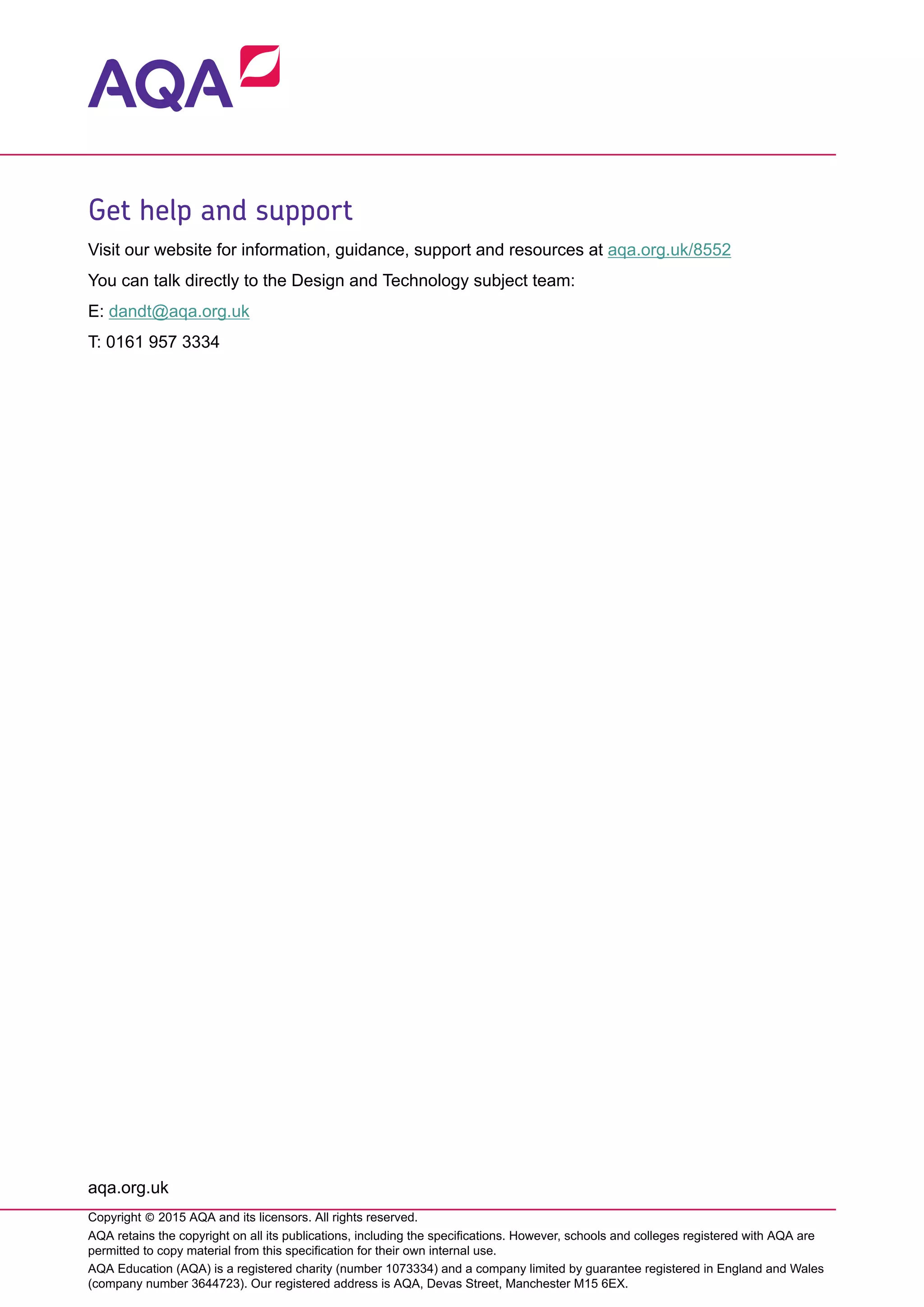This document outlines the specification for AQA's GCSE Design and Technology course. It includes:
1. An introduction to the course and support available from AQA.
2. An overview of the course content covering core technical principles, specialist technical principles, and designing and making principles.
3. Details of the assessments, including a written exam and non-exam assessment (NEA) practical project.
The document provides concise yet comprehensive information on the structure and content of AQA's GCSE Design and Technology course.



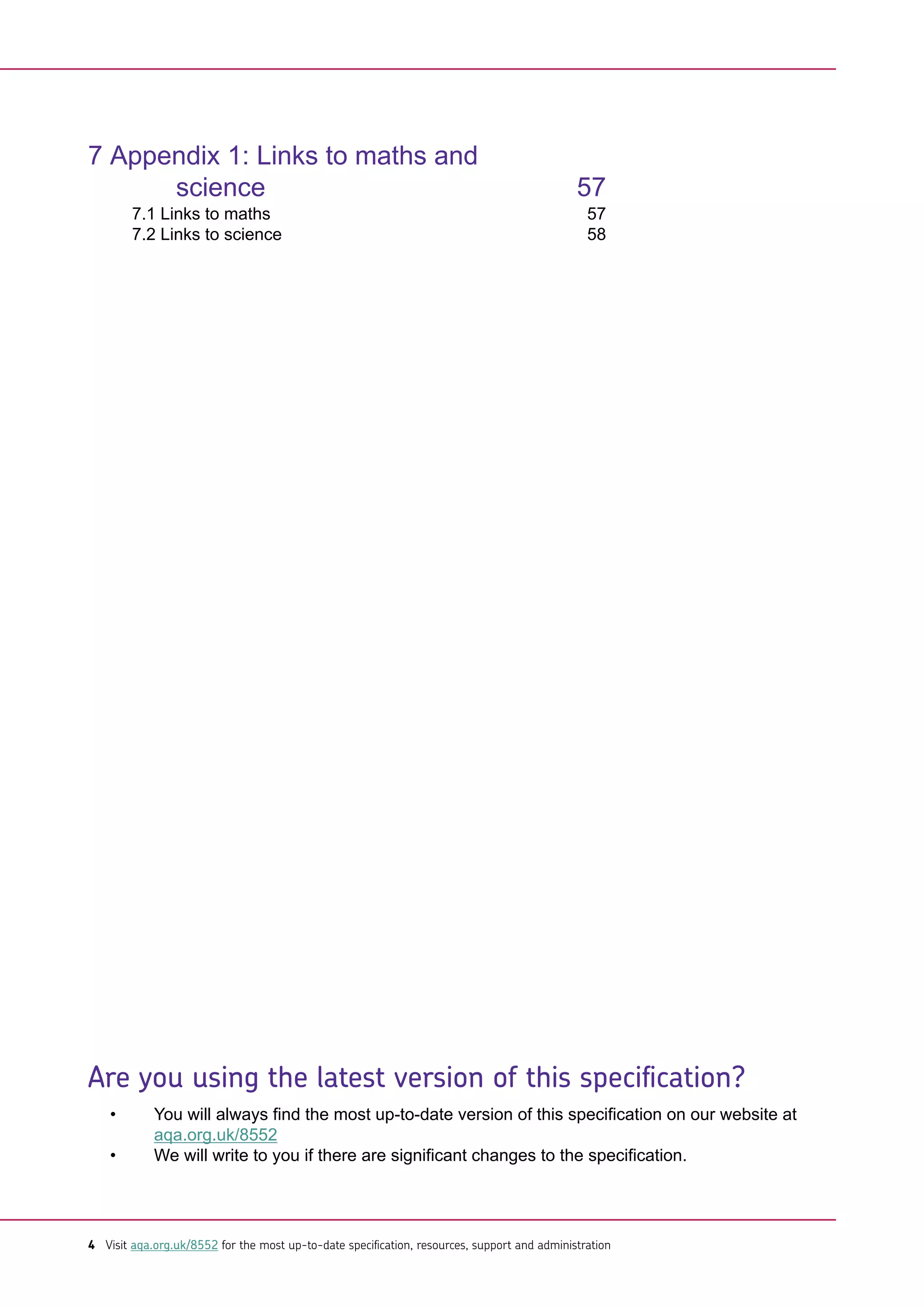
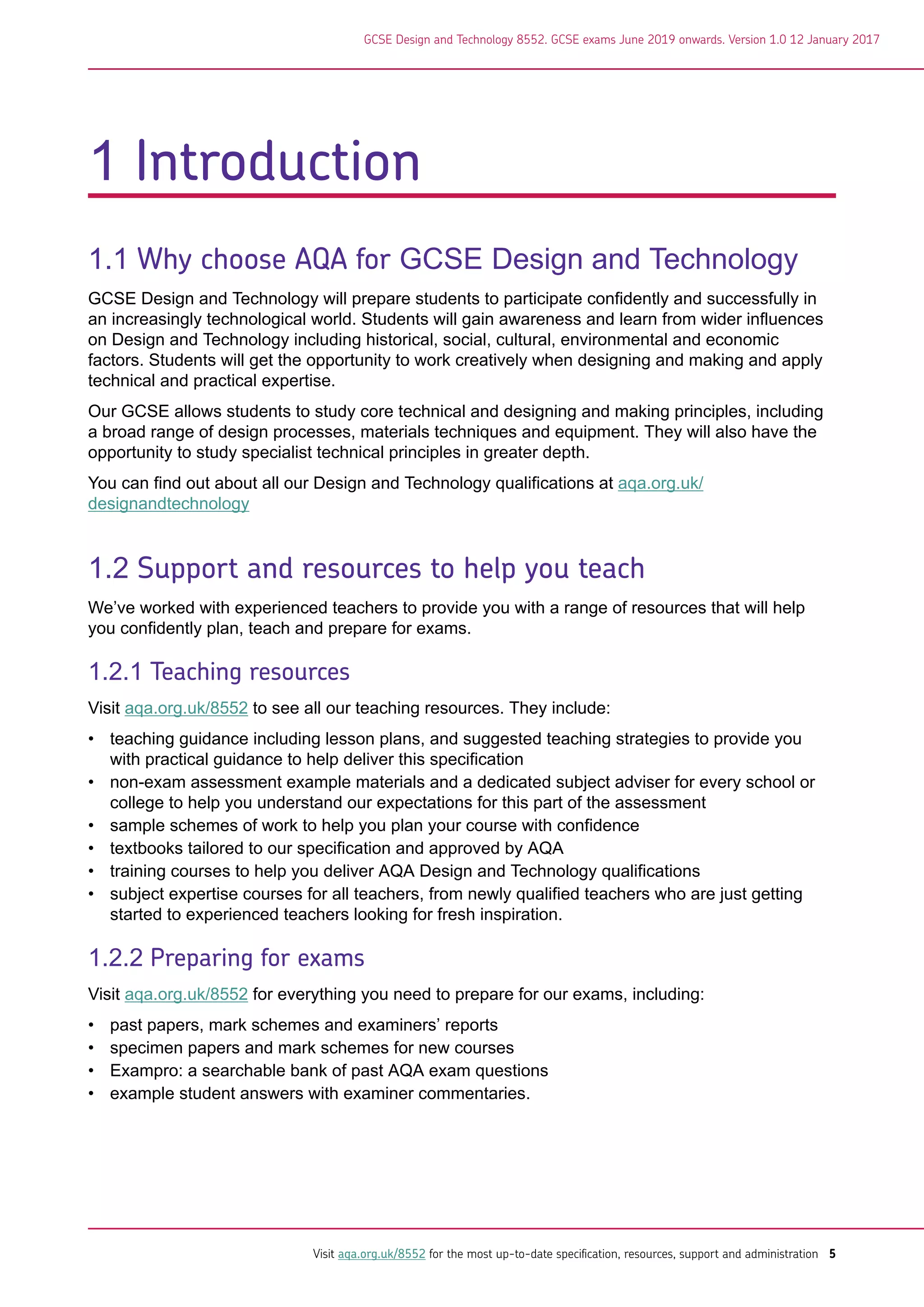

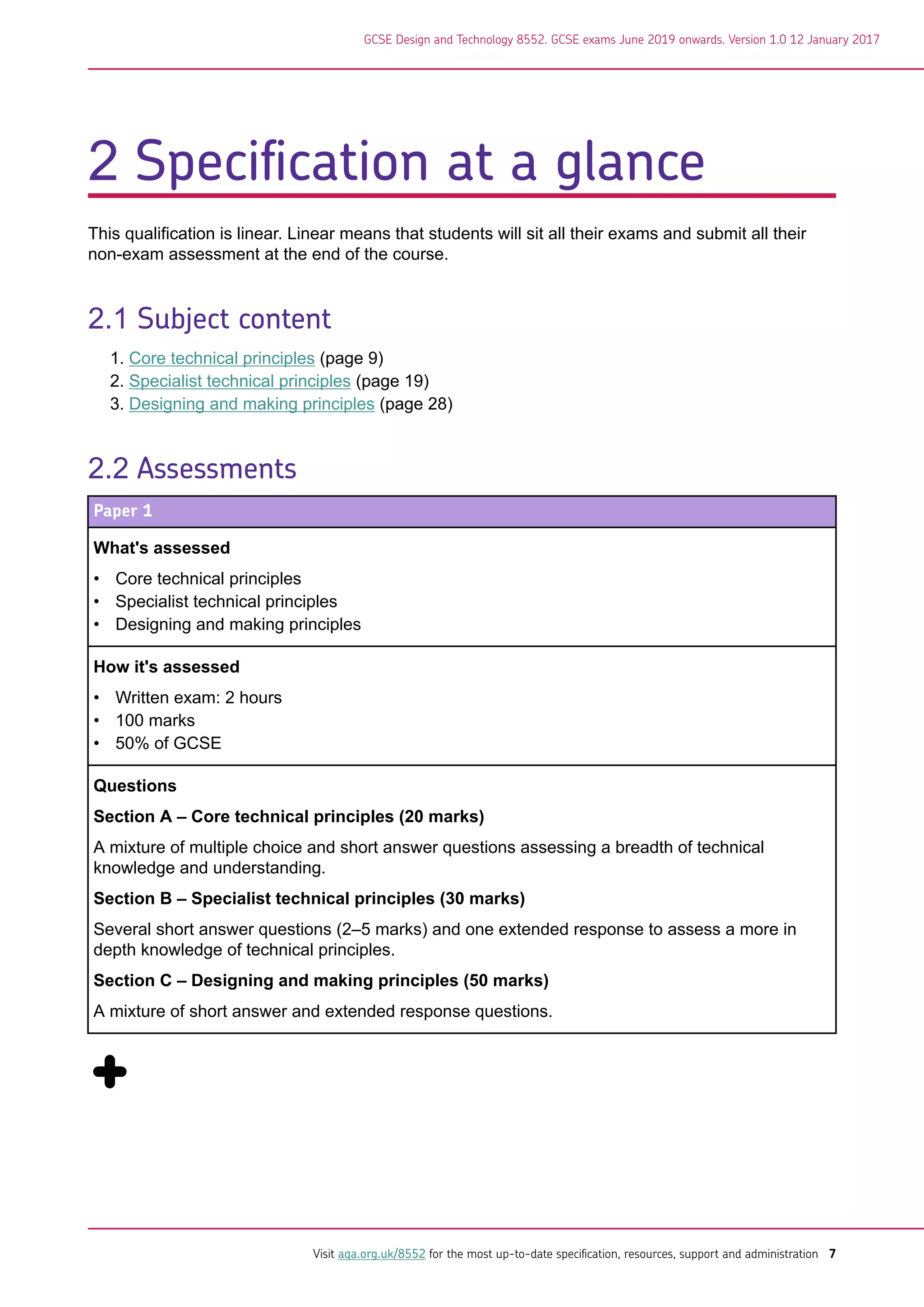











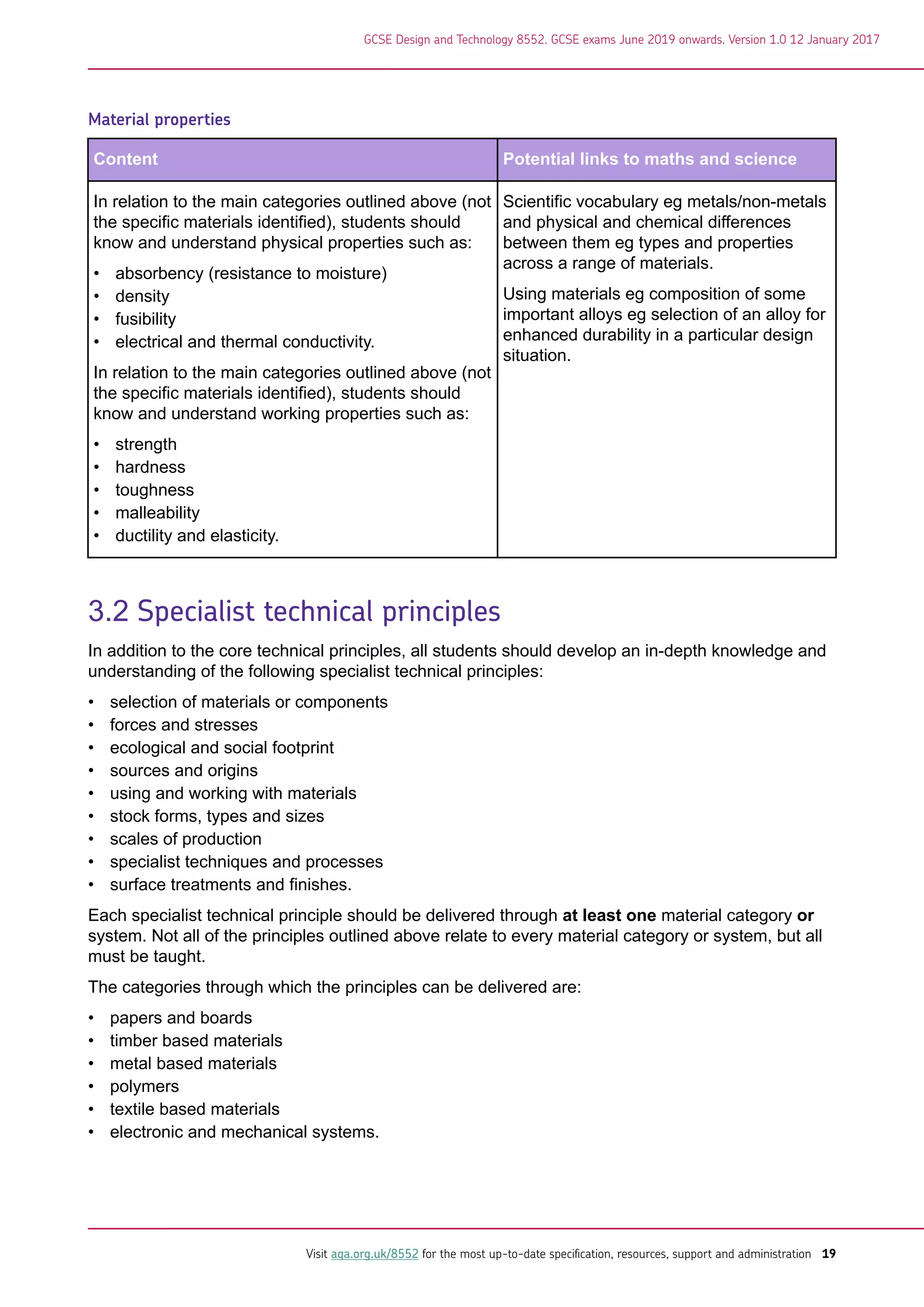




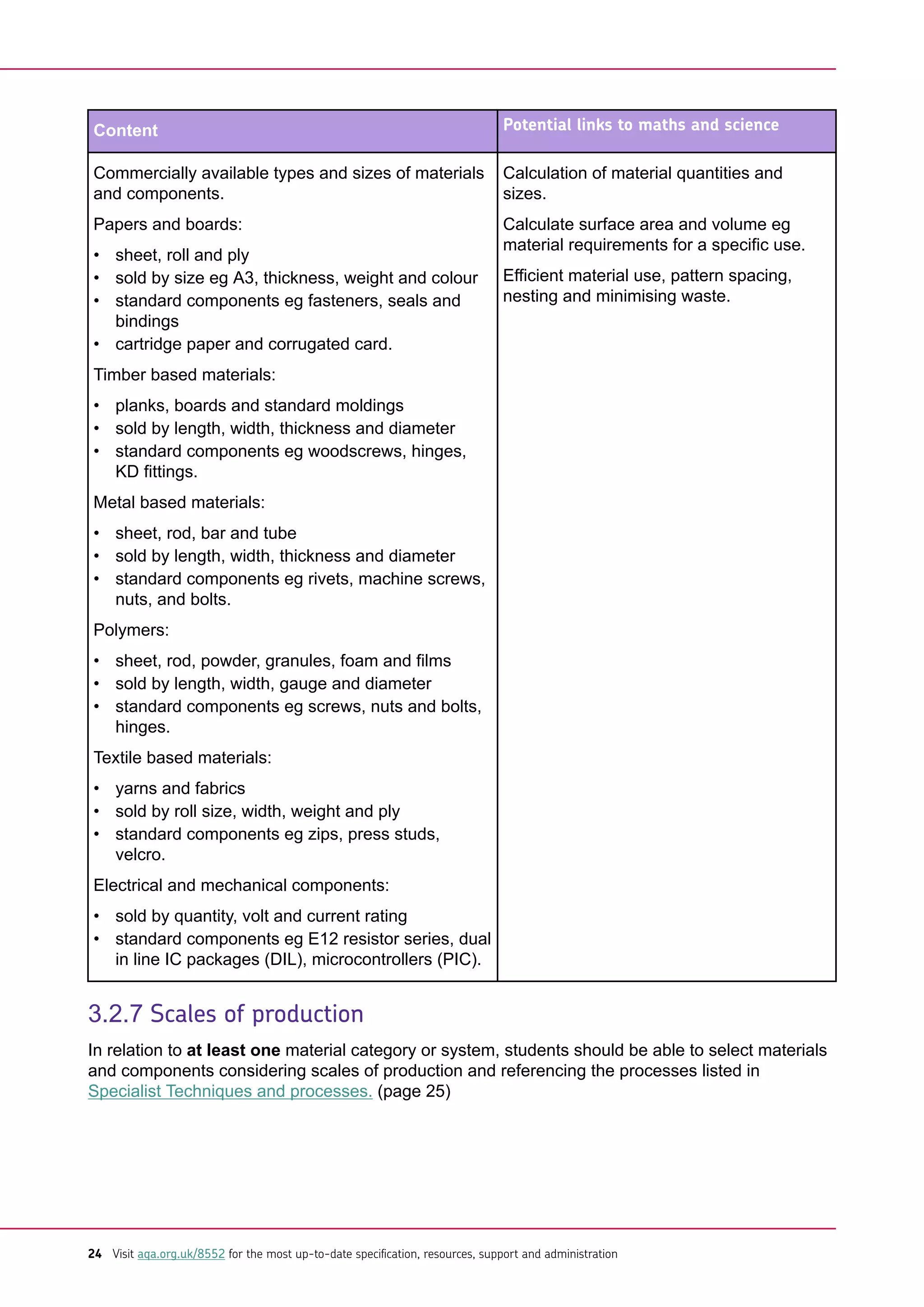


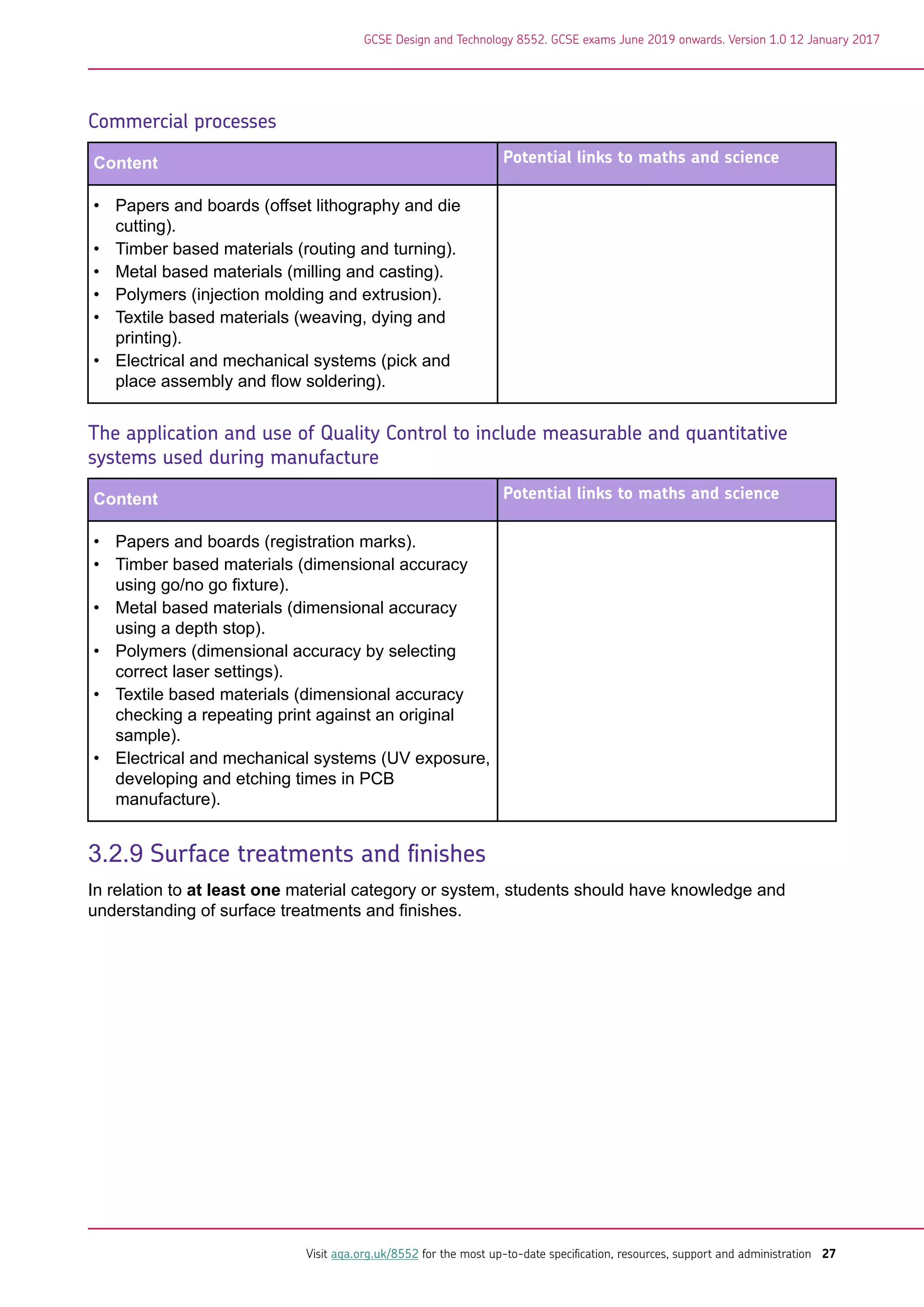




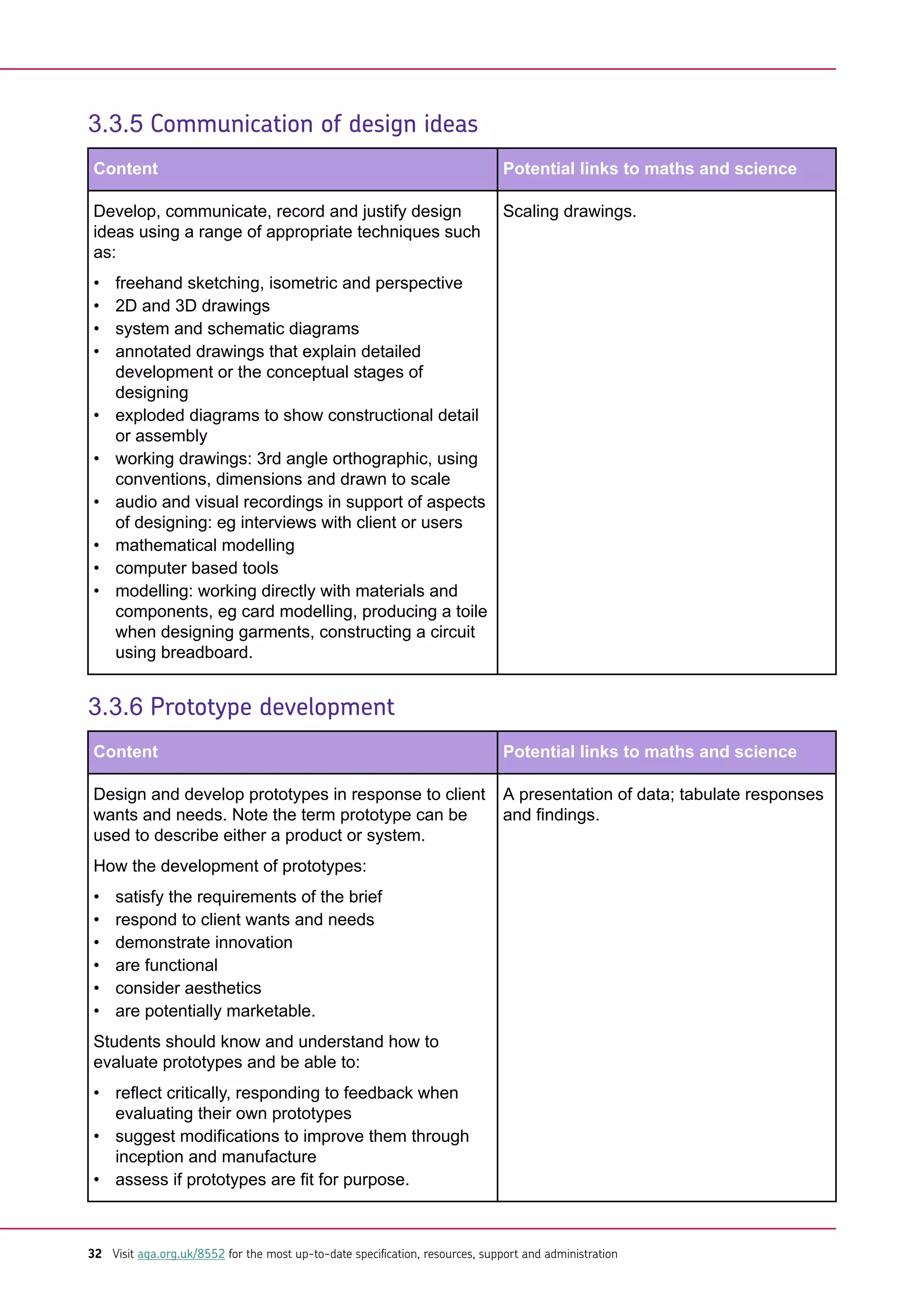






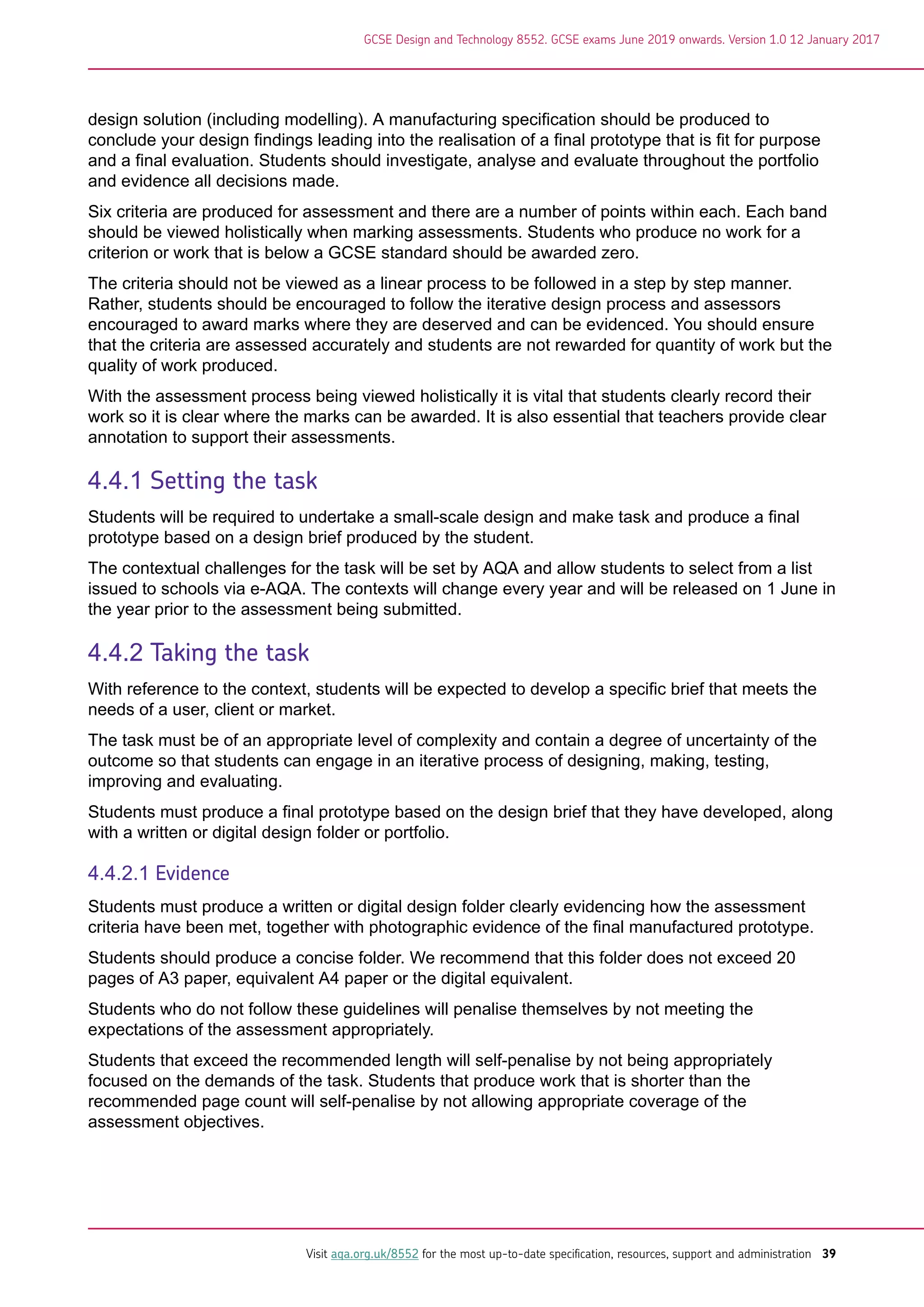

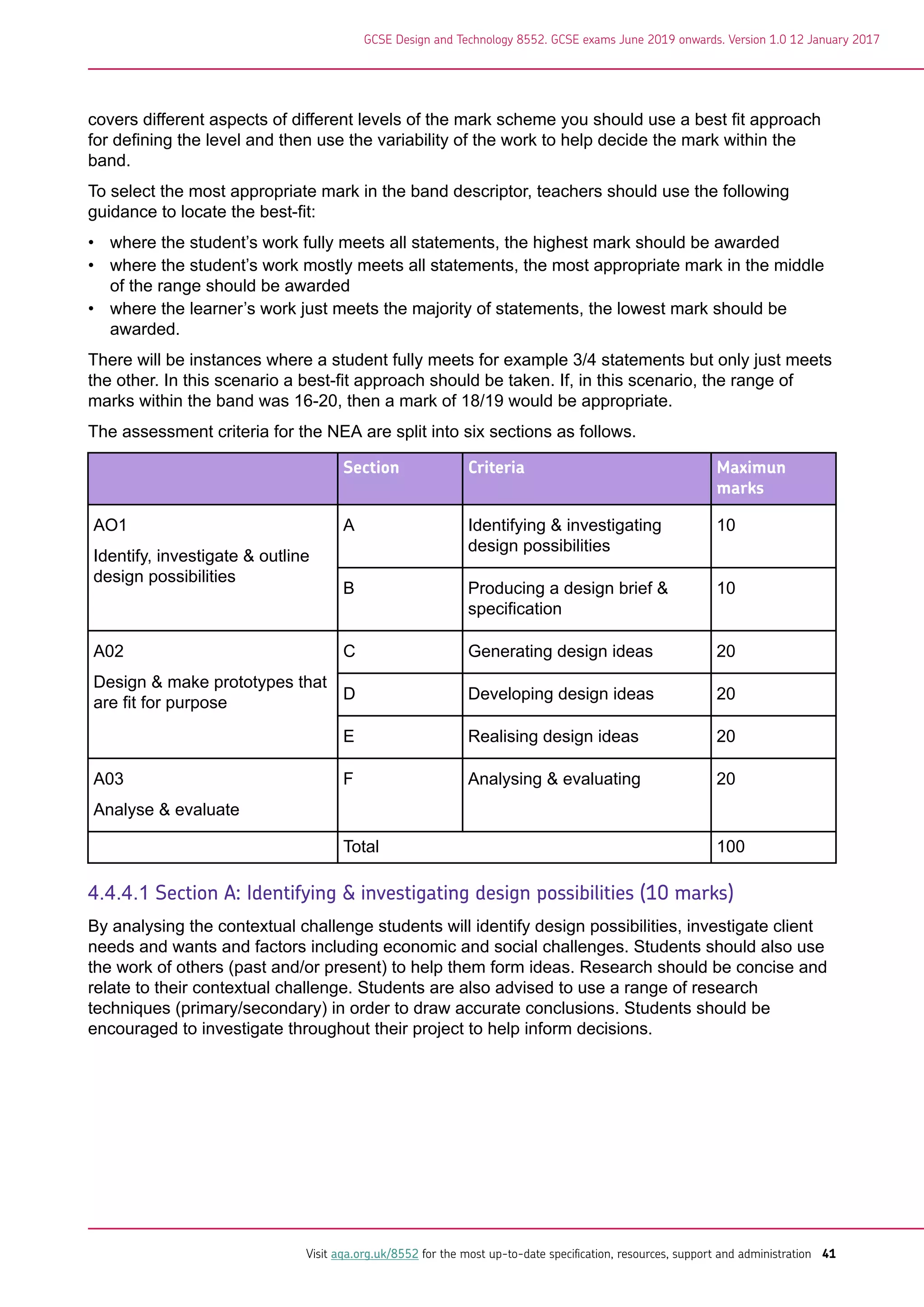






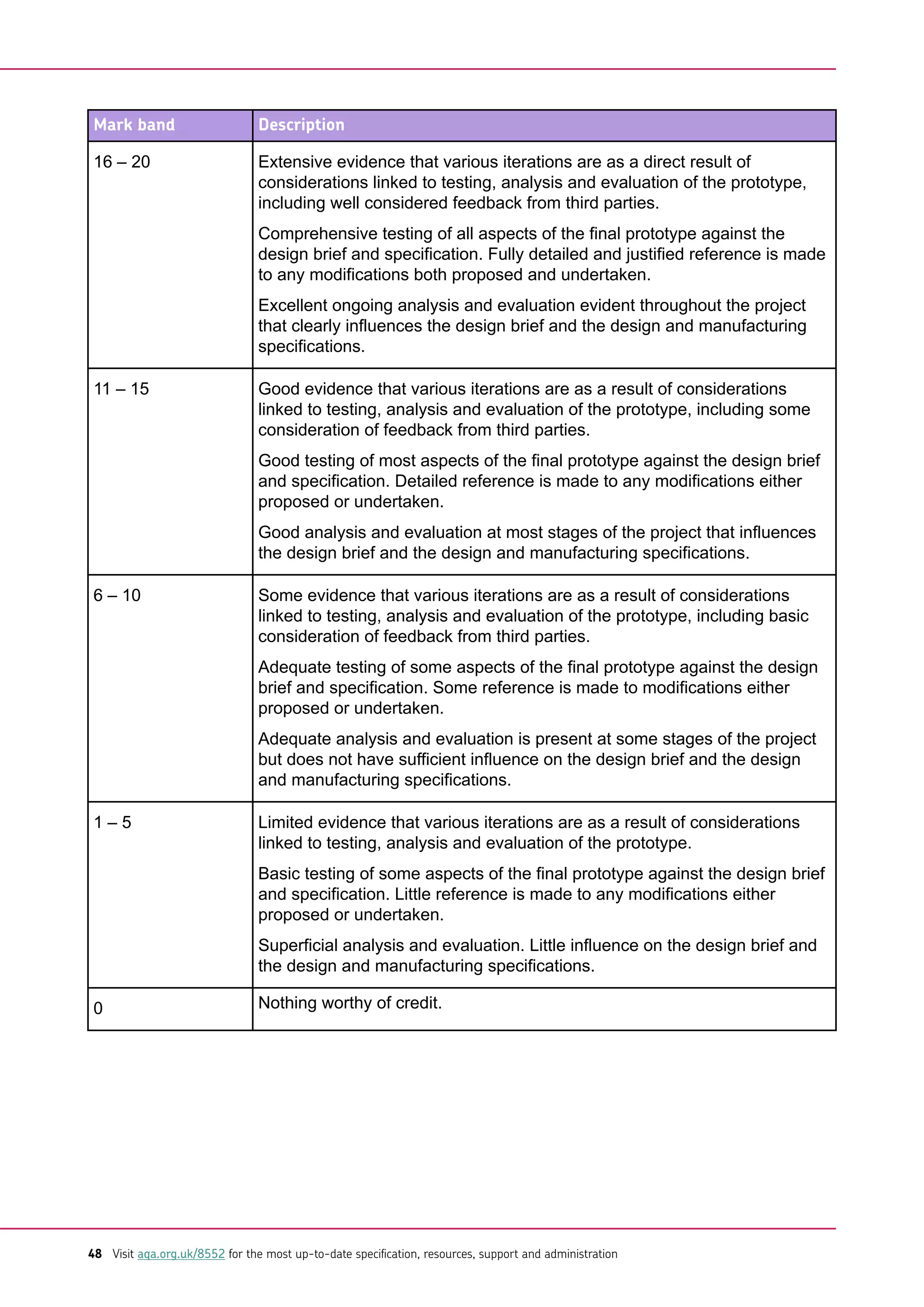


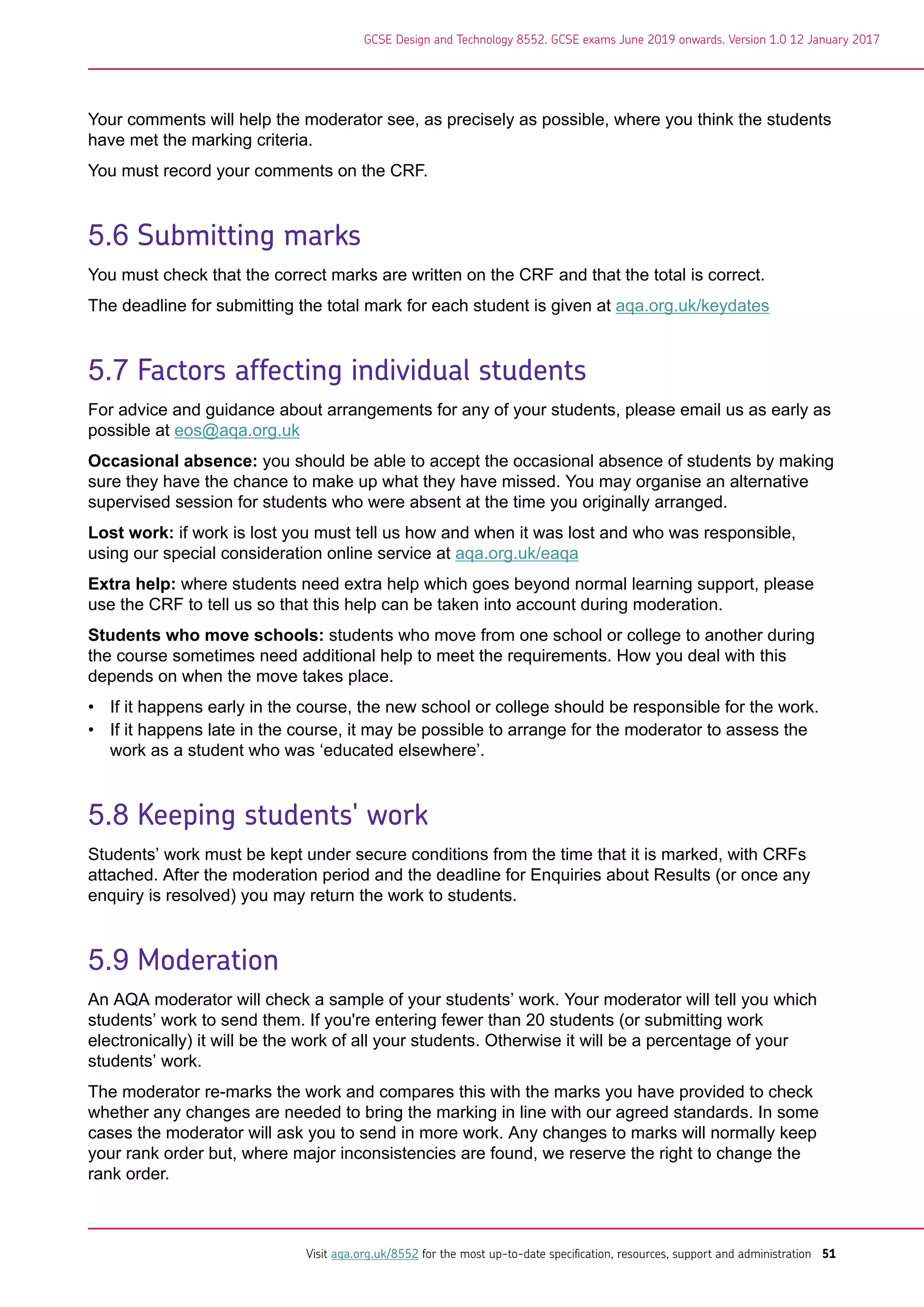



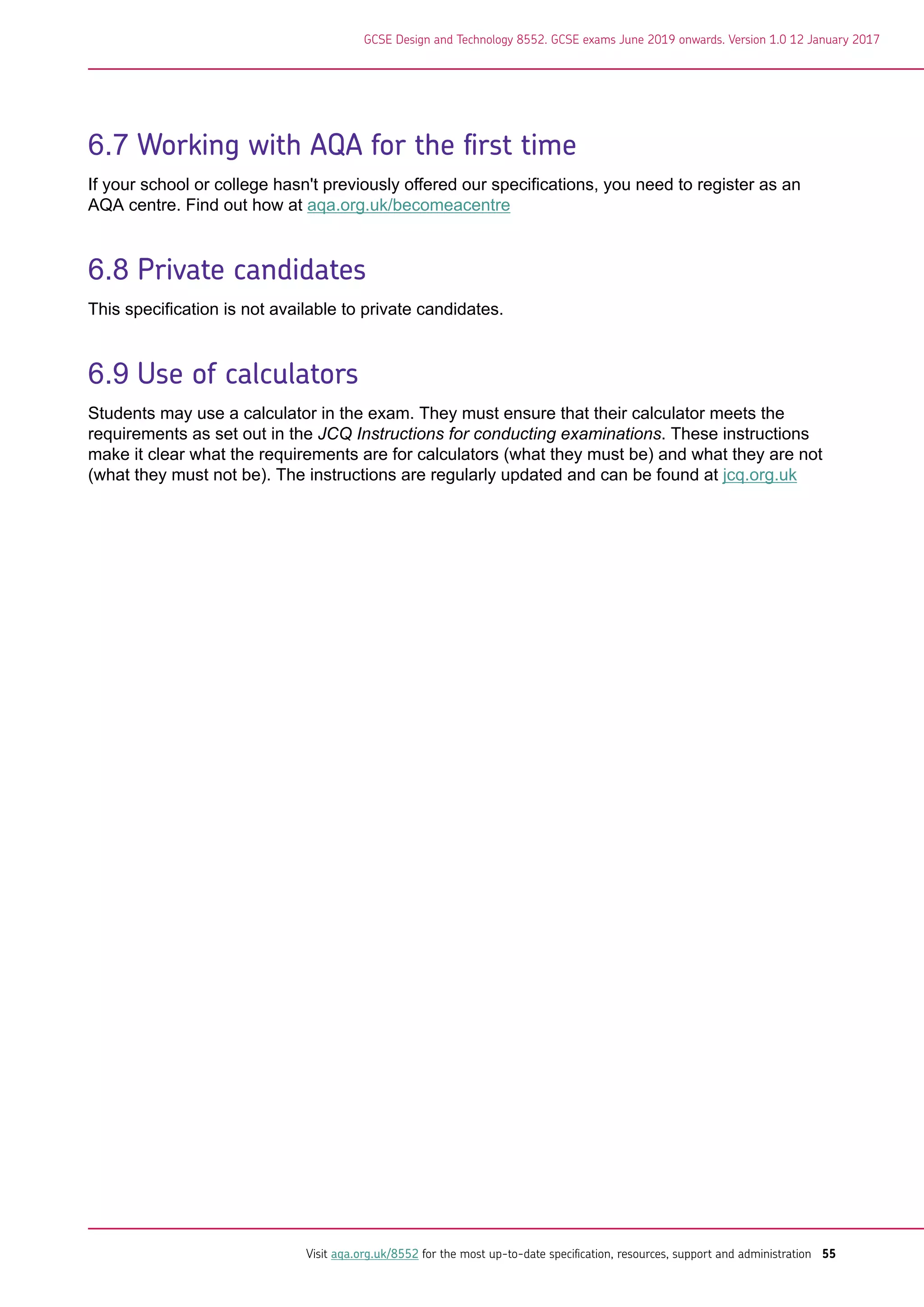



![2 Life cycle assessment and recycling
Ref Scientific knowledge and skills
requirements
Examples of design and technology
applications
2a The basic principles in carrying out a life-
cycle assessment of a material or product.
Selection of materials and components
based on ethical factors, taking into
consideration the ecological and social
footprint of materials.
3 Using materials
Ref Scientific knowledge and skills
requirements
Examples of design and technology
applications
3a The conditions which cause corrosion and
the process of corrosion and oxidisation.
Understanding of properties of materials
and how they need to be protected from
corrosion through surface treatments
and finishes.
Appreciate how oxidisation can be used
when dyeing materials.
3b The composition of some important alloys
in relation to their properties and uses.
Selecting appropriate materials.
3c The physical properties of [materials], how
the properties of materials are selected
related to their uses.
Knowledge of properties of materials to
be applied when designing and making.
3d The main energy sources available for use
on Earth (including fossil fuels, nuclear
fuel, bio-fuel, wind, hydro-electricity, the
tides and the Sun), the ways in which they
are used and the distinction between
renewable and non- renewable sources.
Understanding of how to choose
appropriate energy sources.
3e The action of forces and how levers and
gears transmit and transform the effects of
forces.
Knowledge of the function of mechanical
devices to produce different sorts of
movement, changing the magnitude and
direction of forces.
GCSE Design and Technology 8552. GCSE exams June 2019 onwards. Version 1.0 12 January 2017
Visit aqa.org.uk/8552 for the most up-to-date specification, resources, support and administration 59](https://image.slidesharecdn.com/aqa-8552-sp-2017-170528091208/75/AQA-Specification-59-2048.jpg)
